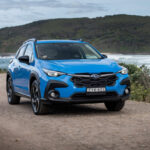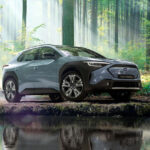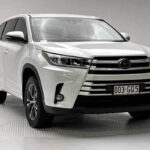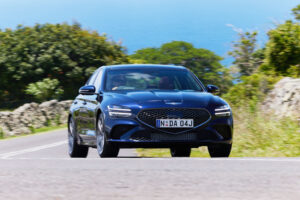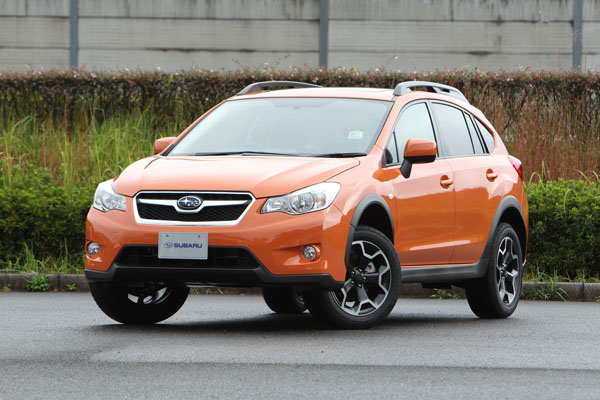
2012 Subaru XV
Subaru is very well known for its all-wheel-drive models and in this edition of our Used Car
Checkout series we are examining the XV series built from 2012 onwards.
The Subaru XV from 2012 onwards have 220 mm of ground clearance, up by a substantial
75 mm on the Impreza XV it superseded so was no longer a hatchback trying to look like
an SUV.
That 220mm is regarded by many as being the minimum ground clearance for a genuine
off-road vehicle. You wouldn’t call it a genuine 4WD in appearance, but under that station
wagon body it’s close to being a genuine 4WD.
The cabin of the XV is light and quite spacious with a soft-touch material on the dashboard
and steering wheel. There’s good leg, head and shoulder room in four seats. The Subaru
XV’s interior gets semi sporty front bucket seats. Rear seats can carry three children, or
two adults without too much shoulder rubbing.
Boot space is rather limited unless the rear seatbacks are down. This lack of room is due
to the XV being based on the Impreza hatch rather than designed as a station wagon.
Excellent noise suppression promises comfortable long-distance travel.

2014 Subaru XV
Handling is somewhat hampered by the extra ground clearance and the higher centre of
gravity that creates. However, it you don’t drive it as though it’s a sports wagon it will feel
fine. If you do get too close to the Impreza’s limits of handling then electronic aids will do
their best to save you.
Most XVs from the March 2017 upgrade have Subaru’s impressive EyeSight system.
Camera-based (not radar based) its major safety features are autonomous emergency
braking, brake assist, rear cross traffic alert, reverse automatic braking as well adaptive
cruise control, lane departure warning, blind spot monitoring and lane-keeping assist.
Vision Assist makes life easier for the driver as it switches from high to low beam when it
detects oncoming headlights.
The XV has six airbags, front seat-belt pre-tensioners with load limiters and the usual
stability and traction control for a five-star ANCAP rating.
Subaru XV is powered by a 2.0-litre horizontally-opposed ‘boxer’ engine. Most are
automatics though some manuals were sold till a model makeover in 2017.
Some Subaru XV owners we have spoken to say they could use some more power
especially when quick acceleration is needed, or they are climbing hills with a load on
board. To others the performance is considered fine. Try for yourself during your test
drives. Ideally this testing should be done with your family on board as their added weight
may noticeably change the performance.
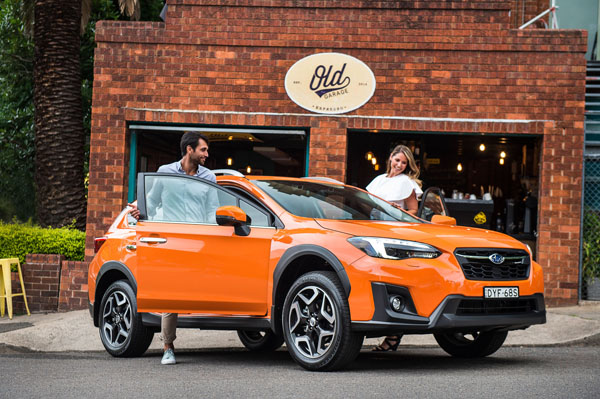
2019 Subaru XV
A Subaru XV Hybrid was introduced in 2020 it uses a 2.0-litre horizontally-opposed Boxer
engine, high-voltage lithium-ion battery and Lineartronic continuously variable
transmission, with seven manual overrides.
The four-cylinder engine produces 110 kilowatts of power at 6000 rpm and 196 Nm of
torque at 4000 rpm. The electric motor adds 12.3 kW of power and 66 Nm of torque and is
self-charging, capturing kinetic energy through regenerative braking and coasting.
The e-Boxer logic adjusts the power split between petrol and electric to match driving
conditions. It automatically changes between three modes: Motor Assist EV driving; Motor
Assist electric (EV) + petrol engine driving and engine-only driving.
In 2021 a mid-life update of its Subaru XV saw it with a new grille, front bumper shape,
foglight surrounds and alloy wheel designs.
The hybrid range was now offered in two models, the XV Hybrid L and Hybrid S. Both
have e-Active Shift Control, which is designed to supports responsive driving.
The hybrids are fitted with e-Active Shift Control, which in SI-Drive on winding roads,
engages automatically, based on information including accelerator use and the G sensor
signal. It deactivates when it works out normal driving has resumed.
The Japanese company is well established in Australia since its earliest days here way
back in the early 1970s. There’s a strong dealer network, with quite a number of dealers in
non-metro areas.
These are an unusual design so are best left to Subaru specialists, or to independent
mechanics who specialise in them. Having said that, a smart owner with a workshop
manual beside them can do a fair bit of routine work.
Spare parts prices are line-ball for this class and we have heard of no real complaints
about availability.
Insurance costs are, likewise, about par for the course. As usual, shop around, but make
sure you’re comparing like for like.
WHAT TO LOOK FOR
A full service record is good in any car, sensible people who choose cars like Subarus
often have them.
Few Subaru XVs go off sealed roads so if you do find one – look for scratches on the
bumper corners and doors, as well as scuffing under the body.
Check the dipstick to make sure the oil level is okay, Subaru engines can burn oil at times
and may have been inadvertently run low. If you’re suspicious check the service books in
case it’s running late for the work.
Check for damage in the boot as it relatively small and may have been crammed tight at
times.
Make sure the engine kicks over quickly and idles neatly almost from the moment it first
runs. If you haven’t driven a Subaru boxer engine before you may find it’s a slightly
uneven beat. This is normal and you soon become accustomed to it.
If the CVT automatic is a bit slow to react at very slow speeds, usually when parking, it
may have problems. Have a professional check it out.
Manual gearboxes should be light and easy in their changes.
HOW MUCH?
Budget on spending from $10,000 to $15,000 for a 2012 Subaru XV 2.0i; $12,000 to
$17,000 for a 2013 2.0i-S; $14,000 to $21,000 for a 2015 2.0i-L; $16,000 to $23,000 for a
2015 2.0i-S; $18,000 to $24,000 for a 2017 2.0i-S or a 2.0i; $20,000 to $28,000 for a 2018
S-Edition; $23,000 to $31,000 for a 2020 2.0i Premium; and $28,000 to $38,000 for a 2021
Hybrid S.
CAR BUYING TIP
Looking a hybrid and you’ve never driven one before? It makes sense to spend plenty of
time testing it as it’s feeling and response can be quite different.
RECALLS: To browse recalls on all vehicles go to the ACCC at:
www.productsafety.gov.au/products/transport/cars/




